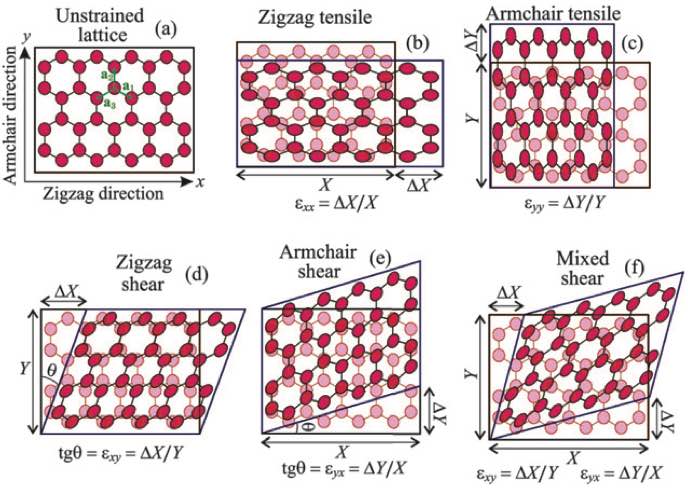Implementing the quantum-mechanical Kubo-Greenwood formalism for the numerical calculation of dc conductivity, we demonstrate that the electron transport properties of a graphene layer can be tailored through the combined effect of defects (point and line scatterers) and strains (uniaxial tension and shear), which are commonly present in a graphene sample due to the features of its growth procedure and when the sample is used in devices. Motivated by two experimental works (He X. et al. Appl. Phys. Lett., 104 (2014) 243108; 105 (2014) 083108), where authors did not observe the transport gap even at large (22.5% of tensile and 16.7% of shear) deformations, we explain possible reasons, emphasizing on graphene's strain and defect sensing. The strain- and defect-induced electron-hole asymmetry and anisotropy of conductivity, and its nonmonotony as a function of deformation suggest perspectives for the strain-defect engineering of electrotransport properties of graphene and related 2D materials.

Implementing the quantum-mechanical Kubo-Greenwood formalism for the numerical calculation of dc conductivity, we demonstrate that the electron transport properties of a graphene layer can be tailored through the combined effect of defects (point and line scatterers) and strains (uniaxial tension and shear), which are commonly present in a graphene sample due to the features of its growth procedure and when the sample is used in devices. Motivated by two experimental works (He X. et al. Appl. Phys. Lett., 104 (2014) 243108; 105 (2014) 083108), where authors did not observe the transport gap even at large (22.5% of tensile and 16.7% of shear) deformations, we explain possible reasons, emphasizing on graphene's strain and defect sensing. The strain- and defect-induced electron-hole asymmetry and anisotropy of conductivity, and its nonmonotony as a function of deformation suggest perspectives for the strain-defect engineering of electrotransport properties of graphene and related 2D materials.
